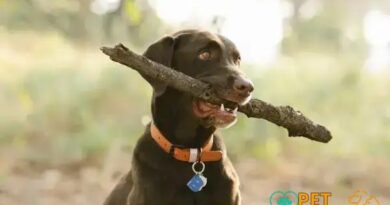What is instinctual behaviors of dogs
Understanding Instinctual Behaviors of Dogs
Instinctual behaviors of dogs are innate actions that are hardwired into their genetic makeup. These behaviors are essential for their survival and play a significant role in their interaction with the environment. From hunting to socializing, these instinctual actions are crucial for a dog’s well-being and development. Understanding these behaviors can help dog owners provide better care and training for their pets.
The Role of Instinct in Dog Behavior
Instincts are automatic responses to specific stimuli, and they guide dogs in various situations. For example, the instinct to chase is a behavior that stems from their ancestral hunting background. This instinct can manifest in various ways, such as chasing after moving objects or other animals. Recognizing these instinctual behaviors allows owners to manage and redirect them appropriately, ensuring a harmonious relationship between the dog and its environment.
Types of Instinctual Behaviors in Dogs
There are several types of instinctual behaviors observed in dogs, including predatory, social, and territorial instincts. Predatory instincts drive dogs to hunt and capture prey, while social instincts influence their interactions with other dogs and humans. Territorial instincts lead dogs to protect their space and family. Each of these behaviors plays a vital role in a dog’s life and can be seen in various situations, from playtime to guarding the home.
Predatory Instincts: The Hunter Within
Predatory instincts are among the most prominent instinctual behaviors of dogs. These instincts are characterized by a sequence of actions, including stalking, chasing, and capturing prey. Even domesticated dogs exhibit these behaviors during play, showcasing their natural hunting abilities. Understanding this instinct can help owners provide appropriate outlets for their dogs, such as engaging in fetch or agility activities that mimic hunting scenarios.
Social Instincts: The Pack Mentality
Dogs are inherently social animals, and their social instincts drive them to form bonds with other dogs and humans. This behavior is rooted in their ancestry as pack animals, where cooperation and social interaction were essential for survival. Social instincts manifest in various ways, including play behavior, communication through barking and body language, and the desire for companionship. Recognizing these instincts can enhance the owner’s ability to socialize their dog effectively.
Territorial Instincts: Protecting Their Domain
Territorial instincts are crucial for a dog’s sense of security and safety. These instincts compel dogs to mark their territory and protect their home and family from perceived threats. This behavior can lead to barking, growling, or even aggressive actions towards strangers or other animals. Understanding territorial instincts is essential for dog owners to manage their pet’s behavior and ensure a safe environment for everyone.
Instinctual Behaviors and Training
Training a dog requires an understanding of its instinctual behaviors. Positive reinforcement techniques can be used to channel these instincts into desirable actions. For instance, rewarding a dog for using its predatory instinct during a game of fetch can reinforce good behavior while satisfying its natural tendencies. By aligning training methods with instinctual behaviors, owners can create a more effective and enjoyable training experience for their dogs.
Environmental Influences on Instinctual Behaviors
The environment plays a significant role in shaping a dog’s instinctual behaviors. Factors such as socialization experiences, living conditions, and exposure to various stimuli can enhance or suppress these innate actions. For example, a dog raised in a stimulating environment may exhibit more pronounced social instincts, while a dog in a less interactive setting may show heightened territorial behaviors. Understanding these influences can help owners create a balanced environment for their pets.
Recognizing and Responding to Instinctual Behaviors
Being able to recognize instinctual behaviors in dogs is crucial for effective management and training. Owners should observe their dogs closely to identify when these behaviors arise and respond appropriately. For instance, if a dog displays predatory behavior towards small animals, owners can redirect that energy into play or training exercises. By being proactive and responsive, owners can foster a positive relationship with their dogs while respecting their natural instincts.



